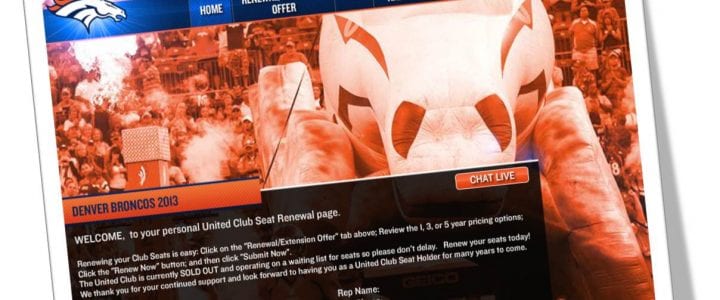by Laura Cade – January 2014
Fans today demand access to a second screen experience to stay connected during the game, rather than just sit there and watch the entire event. So how can organizations respond to this trend with a changing viewing audience? They need some fresh legs: Young adults who bring an innovative, creative energy to the sports industry.
With kids coming out of college looking for their first job in sports, the market for sales men and women has gone up. Most organizations are beginning to see the value in recruiting college grads to bring a new perspective to the sports world in ticket sales, sponsorship activation, and CRM. Lynn Wittenburg, SVP of Marketing at the Tampa Bay Lightning, said, “Most sports organizations are looking to reach a younger audience, so [young adults] usually have great ideas on how to get more young people engaged and coming to games.”
As soon-to-be college grads completing majors in this field we have the opportunity to bring “fresh legs” and fresh ideas to the sports industry for three reasons.
Mobility
First, young adults are mobile. We should not be averse to moving away from home to begin a career. Besides, industry stats tell us that we can expect to change jobs/organizations/employers many times. If we want to seize the opportunities, we can’t afford to have an emotional attachment to a given place. Instead, we breed a “front-runner” mentality that maximizes potential instead of settling for what’s comfortable.
Technology
Young adults accept technology as part of everyday life. Immediate gratification/access to information is desired, if not required. This generation feeds on new content on a frequent basis to maintain interest and to connect with others. Younger people are more adept at multi-tasking and dealing with a broad range of inputs and managing despite distractions. Whereas older individuals may require peace and quiet to work, the younger set can easily incorporate new technology and interruptions and move ahead. This is where we have some of the greatest opportunities to stand out.
Katie Morgan, Director of CRM and Corporate Services at the American Airlines Center, said, “College grads need to improve on new technology once they get into their job. Step up and take the lead.”
Selling the Experience
The game is the focal point but is marketed more for experience and atmosphere rather than a sporting event. Even inside the stadium or arena, the presentation is chock full of pulsating music, cheerleaders, dancers, pyrotechnics, and gigantic video screens. Some people come just to see the in-venue charades rather than the actual gameplay. Compared to traditionalists, college students know that the experience of going to a game has become just as important as the event itself.
Overall, young adults in the sports industry can bring new life and a new approach to sales, sponsorships, and CRM. We enjoy the ever-changing atmosphere of sports and we want others to experience the same thrill we do as we start a career in sports.
Cover photo courtesy of BaseGreen.








